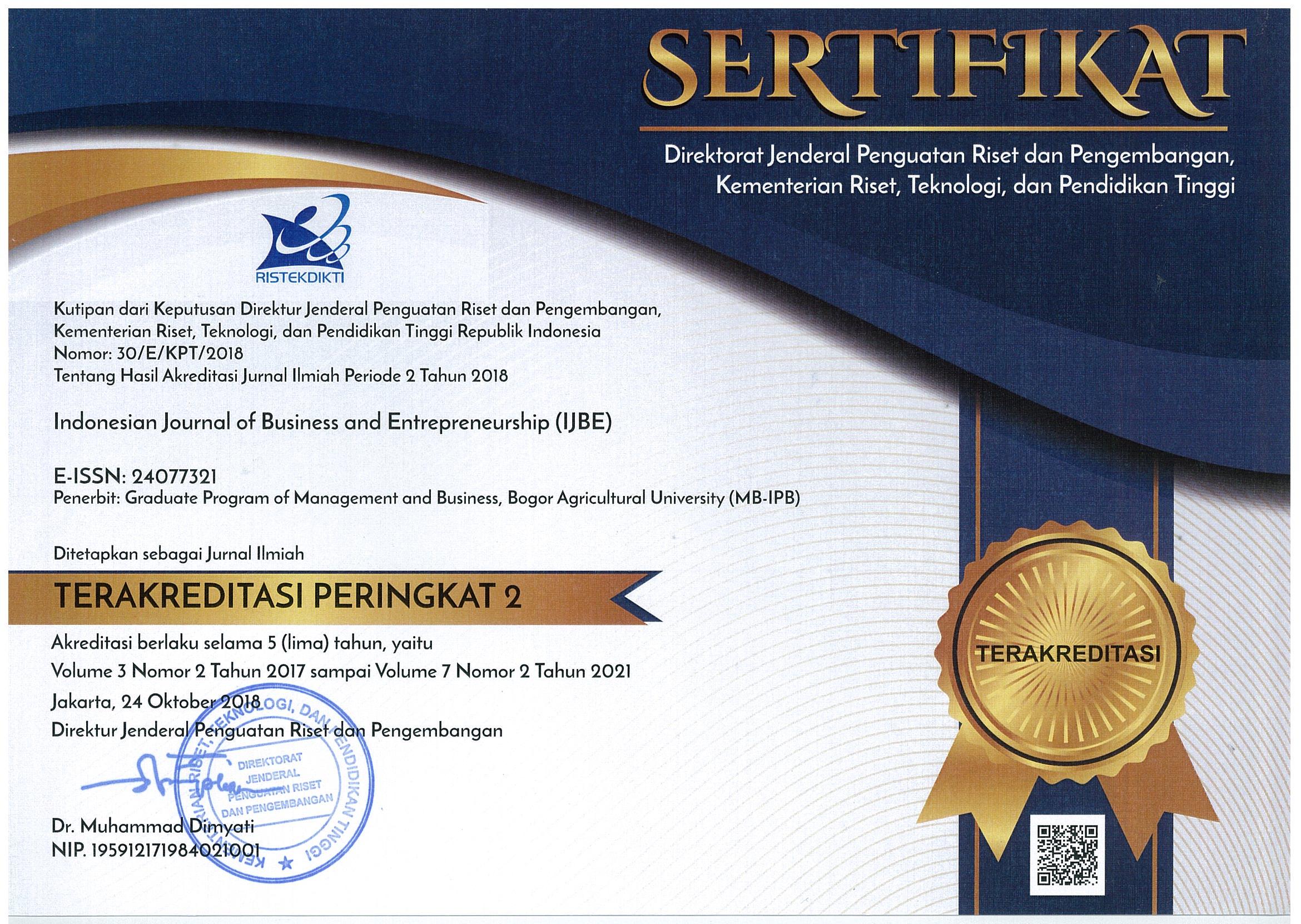The Adoption of Cardless Cash Withdrawal Using Extended UTAUT Model
Abstract
Background: Digital transformation became one of the strategies in the banking industry to keep up with changes in consumer behavior. Cardless Cash Withdrawal (CCW) was one of the bank innovations for digital transformation, where customers could withdraw cash at Automated Teller Machines (ATMs) without bringing or using a debit card.
Purpose: This study aimed to find factors influencing the behavioral intention and use behavior of CCW in Jabodetabek with the extended Unified Theory of Acceptance and Use of Technology (UTAUT) model.
Design/methodology/approach: This study used a non-probability sampling method to sample 155 mobile banking users from Jabodetabek who aware of CCW. The results which were processed using Structural Equation Model with Partial Least Square (SEM-PLS) showed that (insert the findings)
Findings/Result: Performance expectancy and facilitating conditions positively and significantly affected the behavioral intention of using CCW. Meanwhile, the factors that had a positive and significant effect on the use behavior of CCW were facilitating conditions and behavioral intention.
Conclusion: External factors has a stronger impact when individuals use CCW. Therefore, as long as users have adequate surrounding conditions when withdrawing cash, they are more likely to use CCW.
Originality/value (State of the art): This study has adapted the combination of variables for extended UTAUT with different research objects compared to previous studies. Earlier research examined mobile and internet banking (Martins et al. 2014; Oliveira et al. 2014), while this study focuses on services provided in mobile banking. Previous research by Ye et al. (2020) combined the UTAUT model with perceived risk and individual intention to examine their influence on behavioral intention and attitude towards using new transportation modes in China. However, this study integrates perceived risk with the UTAUT model to examine the acceptance factors of cardless cash withdrawal features in Jabodetabek based on behavioral intention and use behavior.
Keywords: behavioral, cardless cash withdrawal, mobile banking, SEM-PLS, UTAUT








